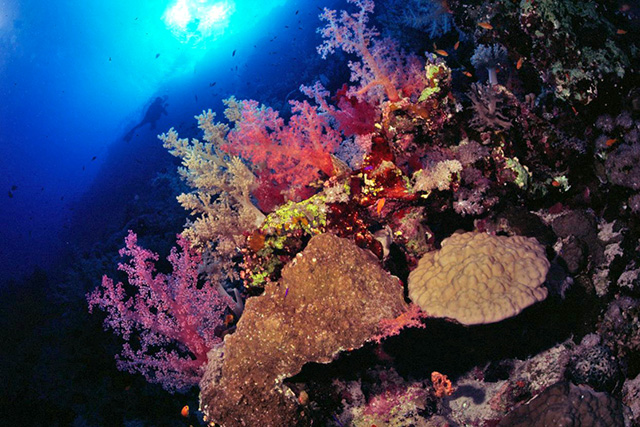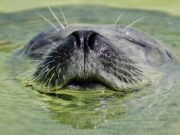Thanks to the steel structure of the SS Thistlegorm, which has been voted one of the best dives in the world, coral and other species which need hard substrates thrive on an otherwise sandy bottom in the northern Red Sea.
Scientists this month describe the first investigation of sealife on the famous Thistlegorm. Lead by Chloe Lee, of the University of Bologna they analysed eight years of data provided by both marine biologists and recreational scuba divers.

Sunken warships were shown to serve as exceptionally good artificial substrates for coral reefs as their size and complexity offer a multitude of opportunities for microhabitats, and in cases where they extend down to 30–40 m, the cooler waters can provide respite to corals from warming oceans but still sufficient light for their symbiotic algae.
Using a visual census technique and the recordings of all species seen, oil jetties in Eilat (northern Red Sea) have also been studied as artificial reef proxies and shown to have even higher species richness in fish assemblages than their neighbouring natural reefs due to increased structural complexity.
The researchers suggested that artificial reefs might also provide migratory networks for coral movement and resettlement within changing oceans.
The underwater community at the SS Thistlegorm remained stable over time, making this artificial reef a possible and promising refuge for Red Sea communities.

The Red Sea has one of the largest coral reef systems of the world, with many species found nowhere else. Due to its peculiar geo-evolutionary past resulting in large gradients of sea surface temperature and salinity, the Red Sea provides an attractive location for studying the response of coral reefs to threats of their projected immediate future. The northern Red Sea is considered a coral refuge because, although it has experienced some of the highest sea surface temperature anomalies, there have been very few coral bleaching events compared to its southern portion.
Red Sea coral communities, though, are relatively understudied when compared to the Great Barrier Reef or Caribbean. This can pose conservation challenges when attempting to monitor and analyse crucial changes in the biological communities of the Red Sea.
 Image: Tim Nicholson
Image: Tim NicholsonOn her final voyage from Glasgow (UK) to Alexandria (Egypt) she was met with two German Heinkel HE 111 bombers. The 128 m long and 17 m high cargo steam ship was split in two by munitions explosions and sunk within minutes [23]. Her ultimate resting ground is in the Straights of Gubal 30 meters below the sea surface [23]. In the 80 plus years since the discovery of the wreck by Jacques-Yves Cousteau in 1955, and the development of the Sharm el-Sheikh resort in the 1990s, the SS Thistlegorm has recruited up to 175,000 visiting divers per year from around the world
Not just in the Red Sea
Studies of artificial reefs and wrecks in other regions throughout the world have shown similarly promising results with respect to underwater community development. In the Florida Keys, artificial reef fish communities mirror those of natural reefs in terms of fish numbers and species composition and two thirds of genera from nearby natural reefs can thrive on sunken shipwrecks within the Caribbean.
Even in temperate seas, such as the North Sea, shipwrecks are biodiversity hotspots of hard substrate communities in an otherwise sandy bottom environment, and also protect nearby soft-bottom communities from fishing activities.
The Thistlegorm
Thistlegorm is Gaelic for Blue Thistle. A British vessel, on her final voyage in 1941 she was attacked from the air by two German Heinkel HE 111 bombers and sunk whilst carrying a cargo of war supplies: rifles, motor bikes, train carriages, trucks. A big wreck – 131 metres long and 17 m high. It now lies at 30 m. The the wreck was discovered by Jacques-Yves Cousteau in 1955. Over time it is estimated that over 175000 people have dived the Thistlegorm.
Find a Thistlegorm Trip
Currents can be strong, and in different directions at the surface and at the wreck. More about diving the Thistlegorm.
Top photo: Tony Gibson/DepositPhotos
Further Reading
Chow GSE, et al. Eight years of community structure monitoring through recreational citizen science at the “SS Thistlegorm” wreck (Red Sea) PLoS ONE. 2023
Image credits:
- Coral reef red sea: Tim Nicholson















